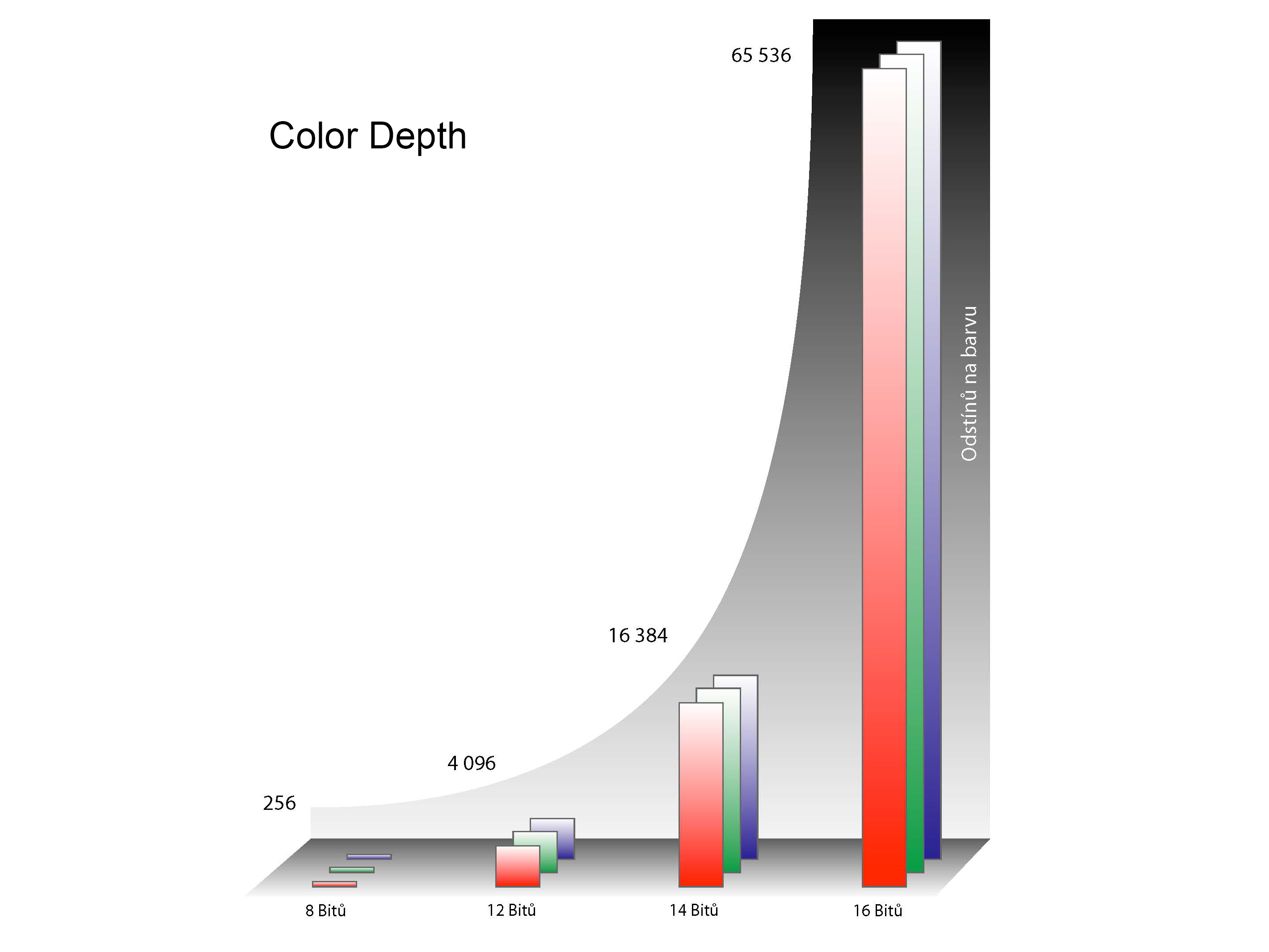
COLORS
HUMAN COLOR PERCEPTION: OUR EYES & VISION
Color can only exist when three components are present: a viewer, an object, and light. Although pure white light is perceived as colorless, it actually contains all colors in the visible spectrum. When white light hits an object, it selectively blocks some colors and reflects others; only the reflected colors contribute to the viewer's perception of color.
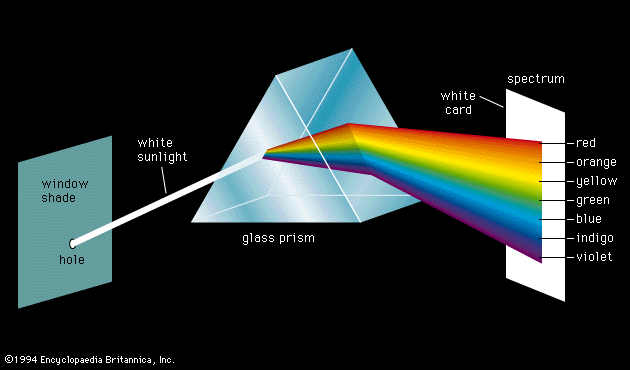
The table gives some more examples, displaying the colour of light shining on an object, the colour(s) absorbed by an object, the colour reflected by an object in this light and the colour of an object seen in this light.
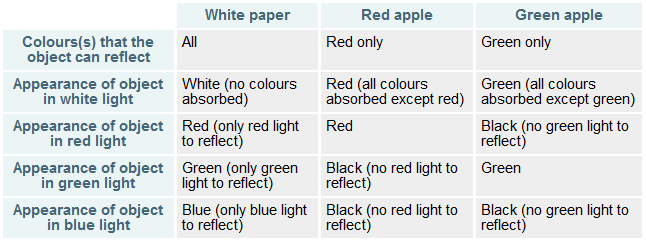
Objects appear black in white light because they absorb all colours and reflect none. Objects also appear black in any single colour of light if their colour is not the same as the light. For example, a green object appears black in any other light than green (or white which contains green) because there is no green light shining on it to reflect into your eyes.
HUMAN COLOR PERCEPTION
The human eye senses this spectrum using a combination of rod and cone cells for vision. Rod cells are better for low-light vision, but can only sense the intensity of light, whereas while cone cells can also discern color, they function best in bright light.
Three types of cone cells exist in your eye, with each being more sensitive to either short (S), medium (M), or long (L) wavelength light. The set of signals possible at all three cone cells describes the range of colors we can see with our eyes. The diagram below illustrates the relative sensitivity of each type of cell for the entire visible spectrum. These curves are often also referred to as the "tristimulus functions."
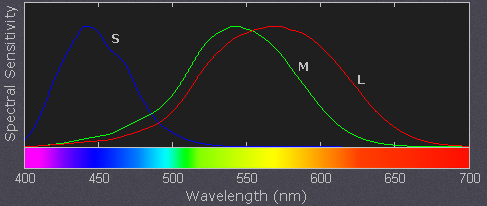
Note how each type of cell does not just sense one color, but instead has varying degrees of sensitivity across a broad range of wavelengths. You can see which colors contribute the most towards our perception of brightness. Also note how human color perception is most sensitive to light in the yellow-green region of the spectrum
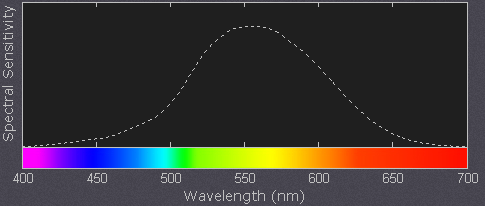
ADDITIVE & SUBTRACTIVE COLOR MIXING
Virtually all our visible colors can be produced by utilizing some combination of the three primary colors, either by additive or subtractive processes. Additive processes create color by adding light to a dark background, whereas subtractive processes use pigments or dyes to selectively block white light. A proper understanding of each of these processes creates the basis for understanding color reproduction.
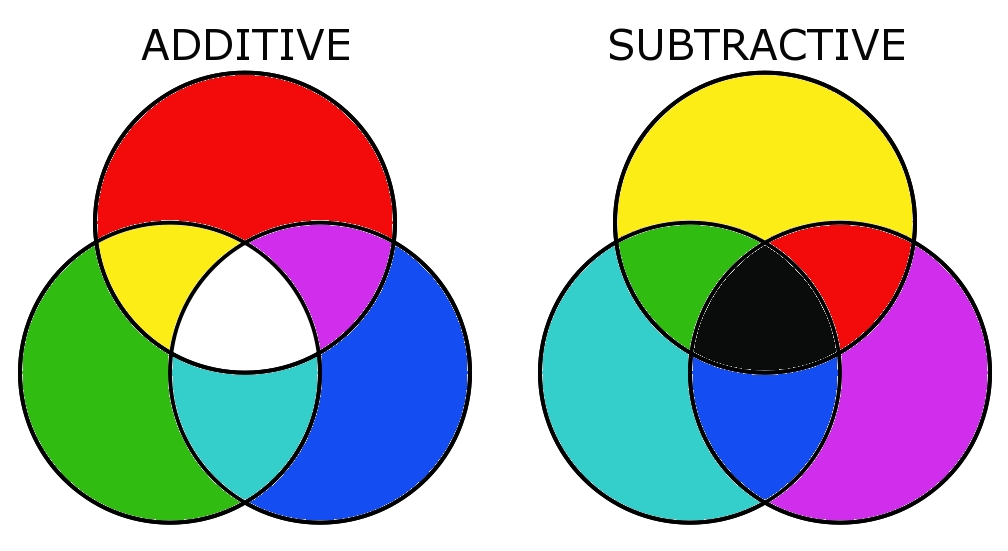
The color in the three outer circles are termed primary colors, and are different in each of the above diagrams. Devices which use these primary colors can produce the maximum range of color. Monitors release light to produce additive colors, whereas printers use pigments or dyes to absorb light and create subtractive colors. This is why nearly all monitors use a combination of red, green and blue (RGB) pixels, whereas most color printers use at least cyan, magenta and yellow (CMY) inks. Many printers also include black ink in addition to cyan, magenta and yellow (CMYK) because CMY alone cannot produce deep enough shadows.
Subtractive processes are more susceptible to changes in ambient light, because this light is what becomes selectively blocked to produce all their colors. This is why printed color processes require a specific type of ambient lighting in order to accurately depict colors.
COLOR PROPERTIES: HUE & SATURATION
Color has two unique components that set it apart from achromatic light: hue and saturation. Visually describing a color based on each of these terms can be highly subjective, however each can be more objectively illustrated by inspecting the light's color spectrum.
Naturally occurring colors are not just light at one wavelength, but actually contain a whole range of wavelengths. A color's "hue" describes which wavelength appears to be most dominant. The object whose spectrum is shown below would likely be perceived as bluish, even though it contains wavelengths throughout the spectrum.
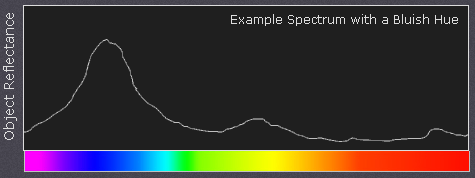
Although this spectrum's maximum happens to occur in the same region as the object's hue, it is not a requirement. If this object instead had separate and pronounced peaks in just the the red and green regions, then its hue would instead be yellow (see the additive color mixing table)
A color's saturation is a measure of its purity. A highly saturated color will contain a very narrow set of wavelengths and appear much more pronounced than a similar, but less saturated color. The following example illustrates the spectrum for both a highly saturated and less saturated shade of blue.
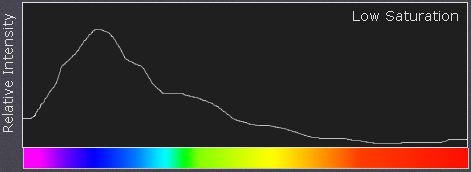
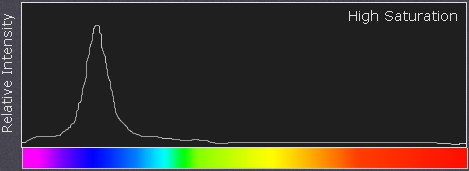
BIT DEPTH TUTORIAL
Bit depth quantifies how many unique colors are available in an image's color palette in terms of the number of 0's and 1's, or "bits," which are used to specify each color. This does not mean that the image necessarily uses all of these colors, but that it can instead specify colors with that level of precision. For a grayscale image, the bit depth quantifies how many unique shades are available. Images with higher bit depths can encode more shades or colors since there are more combinations of 0's and 1's available.
Terminology
Every color pixel in a digital image is created through some combination of the three primary colors: red, green, and blue. Each primary color is often referred to as a "color channel" and can have any range of intensity values specified by its bit depth. The bit depth for each primary color is termed the "bits per channel." The "bits per pixel" (bpp) refers to the sum of the bits in all three color channels and represents the total colors available at each pixel. Confusion arises frequently with color images because it may be unclear whether a posted number refers to the bits per pixel or bits per channel. Using "bpp" as a suffix helps distinguish these two terms.
Example
Most color images from digital cameras have 8-bits per channel and so they can use a total of eight 0's and 1's. This allows for 28 or 256 different combinations—translating into 256 different intensity values for each primary color. When all three primary colors are combined at each pixel, this allows for as many as 28*3 or 16,777,216 different colors, or "true color." This is referred to as 24 bits per pixel since each pixel is composed of three 8-bit color channels. The number of colors available for any X-bit image is just 2x if x refers to the bits per pixel and 23X if x refers to the bits per channel.
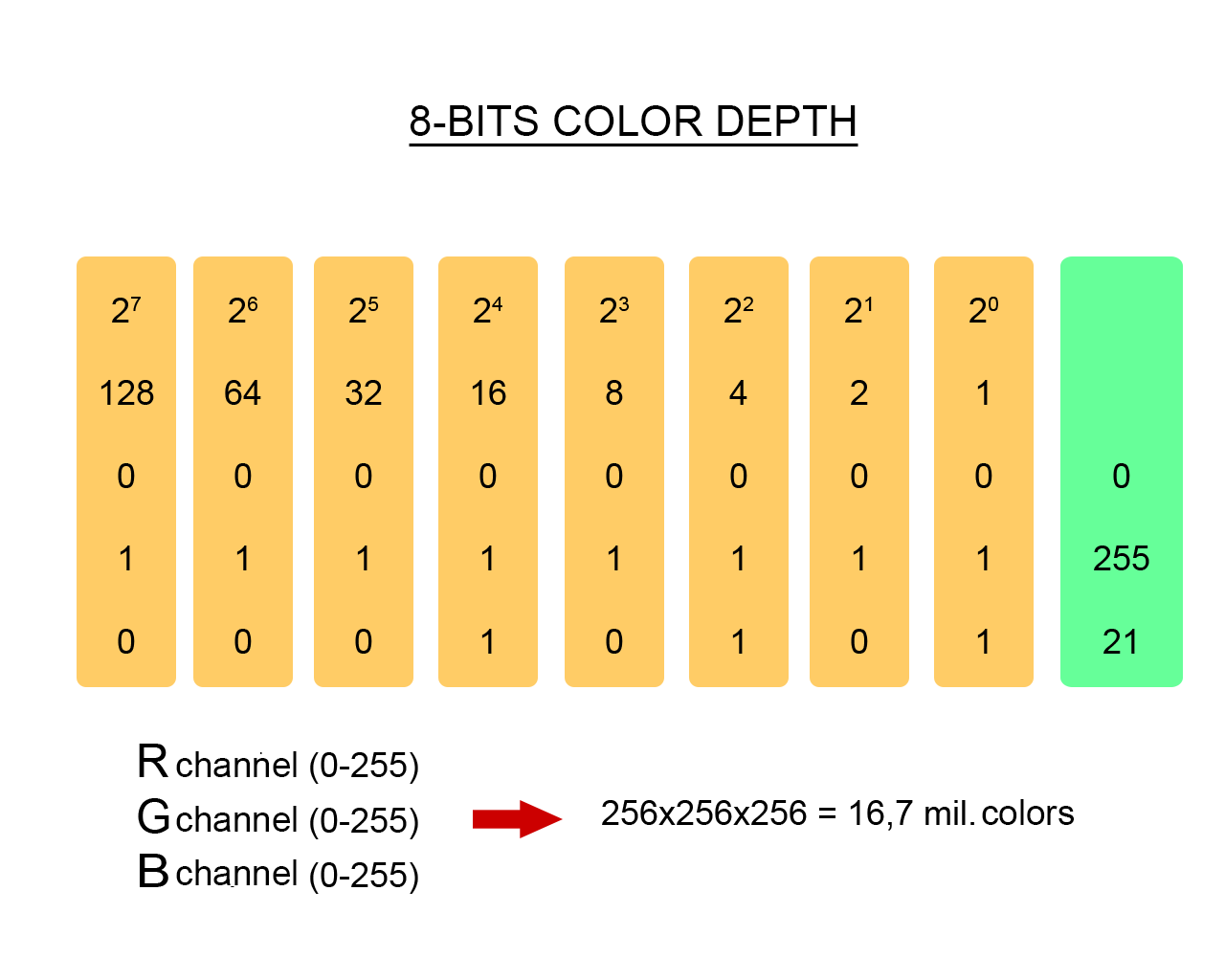
Color depth
